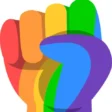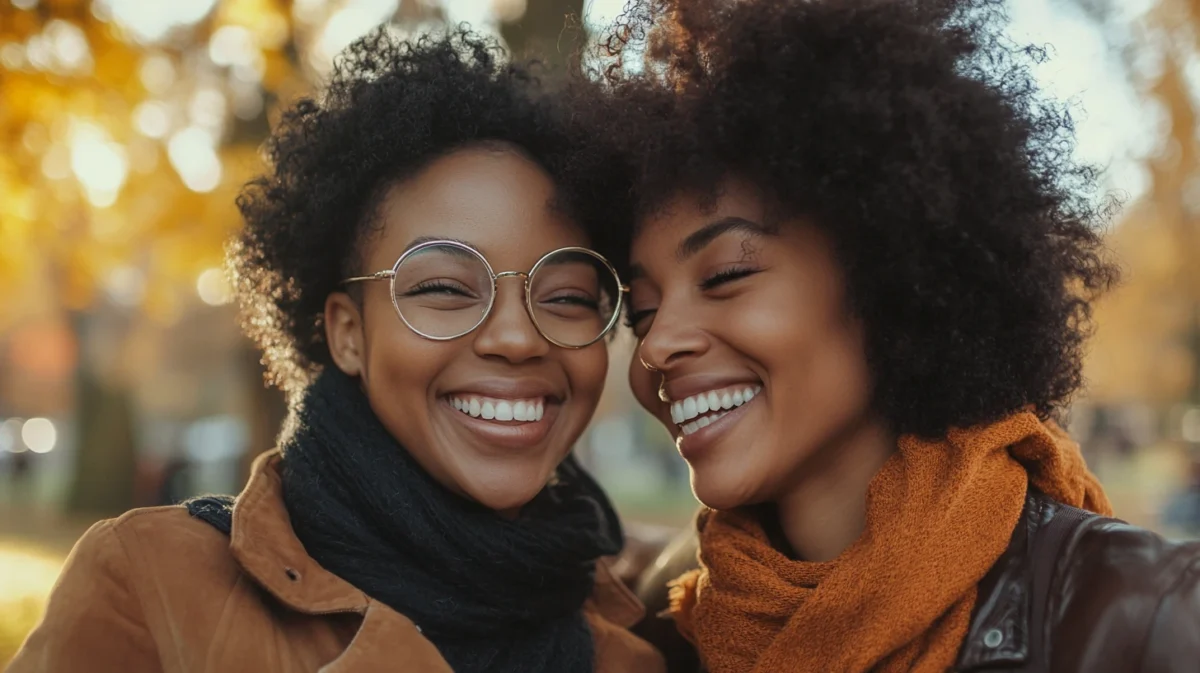The term Black lesbian represents more than just a sexual orientation or race—it speaks to a powerful intersection of identity that challenges societal norms and redefines representation. Across decades, Black lesbians have endured exclusion from both racial and queer movements, carving out their own visibility through culture, community, and activism.
In this article, we celebrate the evolution of the Black lesbian identity, from its roots to the rising voices we see today. We’ll explore challenges faced by Black lesbians, how they’re reshaping media, building safe spaces online, navigating relationships, and redefining what it means to be seen and heard in a world that often overlooks them.
Looking for inspiration? Try this emotional tribute to Black lesbian couples love stories that showcase strength and connection.
Table of Contents
The Evolution of Black Lesbian Identity
Understanding the Origins of Black Lesbian Identity
The roots of Black lesbian identity stretch far deeper than modern LGBTQ+ movements. Long before Pride parades or queer hashtags, Black lesbians existed—often unrecognized but resilient. In the early 20th century, most Black lesbians had to live closeted lives, silenced by both racism and homophobia.
However, even in the shadows, they wrote, loved, organized, and resisted. Writers like Angelina Weld Grimké and Alice Dunbar-Nelson found subtle ways to express same-sex love. The Harlem Renaissance wasn’t only about art—it was also a sanctuary for Black lesbian culture, hidden but fierce.
Intersectionality: How Race and Queerness Intertwine for Black Lesbians
Black lesbian identity is defined by intersectionality—the overlapping systems of oppression tied to both race and sexuality. Unlike white lesbians or straight Black women, Black lesbians face dual discrimination, often being excluded from both queer and Black activist spaces.
This compounded bias has led many Black lesbians to create their own communities, language, and tools of survival. Whether it’s online forums, chosen families, or zines and poetry, Black lesbians have always found ways to center themselves—even when the world refused to.
Intersectionality isn’t a theory to Black lesbians—it’s their everyday reality. That reality influences how they work, date, heal, and fight.
Historical Black Lesbian Figures Who Paved the Way
The story of Black lesbian identity wouldn’t be complete without acknowledging the pioneers who came before. These women stood boldly in their truth, despite systemic efforts to erase them:
| Name | Legacy | Era |
|---|---|---|
| Audre Lorde | Poet and Black lesbian feminist who spoke unapologetically about intersectionality and love | 1960s–1990s |
| Barbara Smith | Political powerhouse and co-founder of the Combahee River Collective | 1970s–Present |
| Pat Parker | Poet who gave voice to Black lesbian life through radical and raw expression | 1970s–1980s |
Each of these figures broke silences, giving today’s Black lesbian youth blueprints for existing, resisting, and thriving.
Black lesbians have always been part of the broader social justice movement—but they’ve had to fight twice as hard to be acknowledged. That fight continues today, not just for visibility, but for equity, healing, and joy.
Representation in Media and Pop Culture
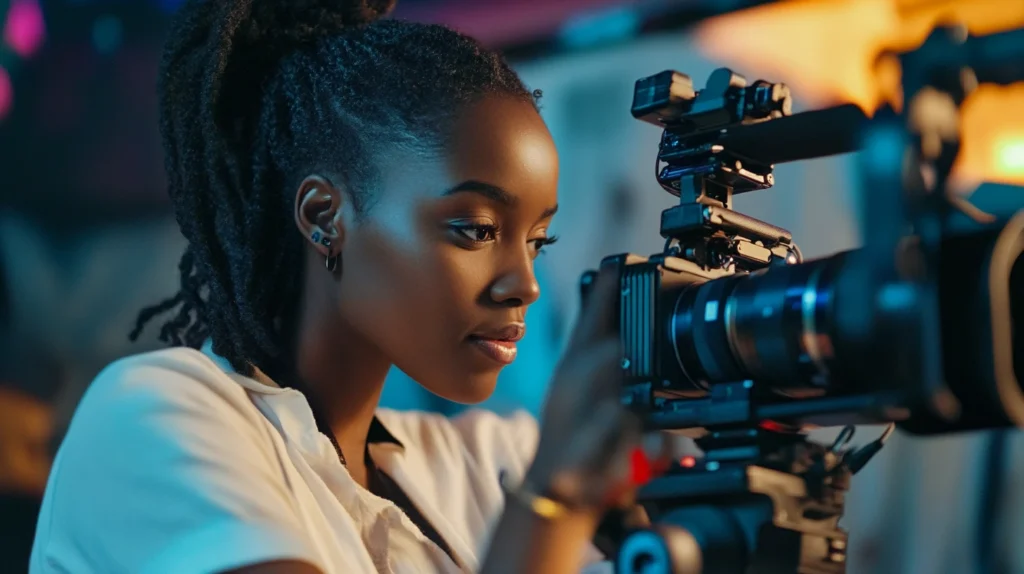
Famous Black Lesbian Celebrities & Their Impact
Visibility matters—especially for those whose identities are often erased. In recent years, several Black lesbian public figures have stepped into the spotlight, not only embracing their identity but transforming media and culture with it.
Wanda Sykes, one of the first openly Black lesbian comedians, has used her voice to challenge stereotypes in comedy and television. Lena Waithe, an Emmy-winning writer and actress, has pushed boundaries with works like The Chi and Master of None, portraying Black queer lives with nuance and authenticity. Meshell Ndegeocello, a genre-bending musician, incorporates themes of love, identity, and Black queer experience in her lyrics.
Their visibility helps shape cultural narratives, especially for younger audiences searching for reflections of themselves. They are more than celebrities—they’re role models, changemakers, and proof that Black lesbian lives belong at the center, not the margins.
Television and Film: Where Are the Black Lesbian Stories?
While representation has improved, there’s still a significant gap when it comes to Black lesbian characters in mainstream media. Most LGBTQ+ portrayals are white-centered, and even when Black characters appear, their queer identities are often sidelined, stereotyped, or cut short.
Shows like Twenties by Lena Waithe and Orange Is the New Black brought some depth to Black lesbian characters. However, too often, these portrayals are either overly sexualized or stripped of complexity.
What’s missing are Black lesbian characters who are full humans—women navigating work, love, friendships, family, and faith. Audiences want stories that feel real, not just symbolic. Real representation validates existence. It tells viewers: “Your story is worth telling.”
How Music and Art Celebrate Black Lesbian Voices
Art and music have long been tools of expression for marginalized communities, and for Black lesbian artists, they’re often the most powerful forms of storytelling. From soul and jazz to hip hop and spoken word, Black queer women have used rhythm and language to share their truths.
Artists like Janelle Monáe, while identifying as pansexual and nonbinary, speak directly to the Black queer experience through futurist visuals and lyrics. Keiynan Lonsdale, and many indie performers on platforms like Bandcamp or YouTube, bring fresh, affirming sounds to queer listeners.
In visual art, painters like Kia LaBeija use photography to tell the story of Black queer womanhood and the intersections of gender, race, and survival.
Whether through lyrics, brush strokes, or cinema, the Black lesbian narrative is being reclaimed and amplified—one voice, one verse, one frame at a time.
Don’t miss our feature on butch lesbian meaning that explores a powerful aspect of identity often portrayed inaccurately in media.
Black Butch Lesbian Identity
What Does It Mean to Be a Black Butch Lesbian?
A Black butch lesbian challenges every norm—racial, gendered, and sexual. While the term “butch” refers to a more masculine presentation within lesbian identity, for many Black lesbians, it’s also layered with cultural expectations, resistance, and pride.
Being a Black butch lesbian means redefining masculinity through a queer, racial lens. It means facing stereotypes, microaggressions, and erasure not only from mainstream culture but often within LGBTQ+ spaces as well. The butch identity isn’t about imitating men—it’s about expressing selfhood authentically, outside the binary.
For Black women, stepping into butch identity often means navigating deeper social consequences. From being misgendered to facing employment discrimination, the risks are real—but so is the power that comes from owning every part of who you are.
Visibility and Misconceptions Around Butch Identity
Mainstream portrayals of butch lesbians—when they exist—are often whitewashed and oversimplified. This invisibility compounds when race is added to the equation. As a result, many people still hold inaccurate or outdated ideas about what it means to be a Black butch lesbian.
Misconceptions range from believing butch lesbians want to be men to assuming they can’t be nurturing, soft, or emotionally expressive. But that’s not the reality. Many Black butches express deep care, vulnerability, and style, blending softness with strength.
Their identity is not about role-playing—it’s about authenticity. Black butch lesbians deserve the same nuanced representation as anyone else in the LGBTQ+ spectrum.
Learn more about the deeper meaning of the butch lesbian identity in our full guide on gender expression in lesbian culture.
Iconic Black Butch Figures in History and Pop Culture
Though often overlooked, Black butch lesbian figures have always existed. Their presence may have been minimized by mainstream narratives, but within queer communities, their legacy is strong.
Some trailblazers include:
| Name | Impact |
|---|---|
| Stormé DeLarverie | The “Rosa Parks” of the LGBTQ+ movement. Her actions at Stonewall helped spark a revolution. |
| Jackie Anderson | A 1980s poet and spoken word performer who spotlighted butch identity in Black lesbian writing. |
| MC Lyte | Though never labeling herself publicly, the iconic rapper challenged femininity norms in hip-hop culture. |
These women helped make it possible for future generations to walk in their truth—with or without public recognition.
In many ways, the Black butch lesbian identity is one of the purest forms of resistance—breaking molds and embracing individuality in a world that demands conformity. Their stories, style, and strength deserve the spotlight just as much as anyone else in the queer landscape.
Online Spaces and Black Lesbian Communities
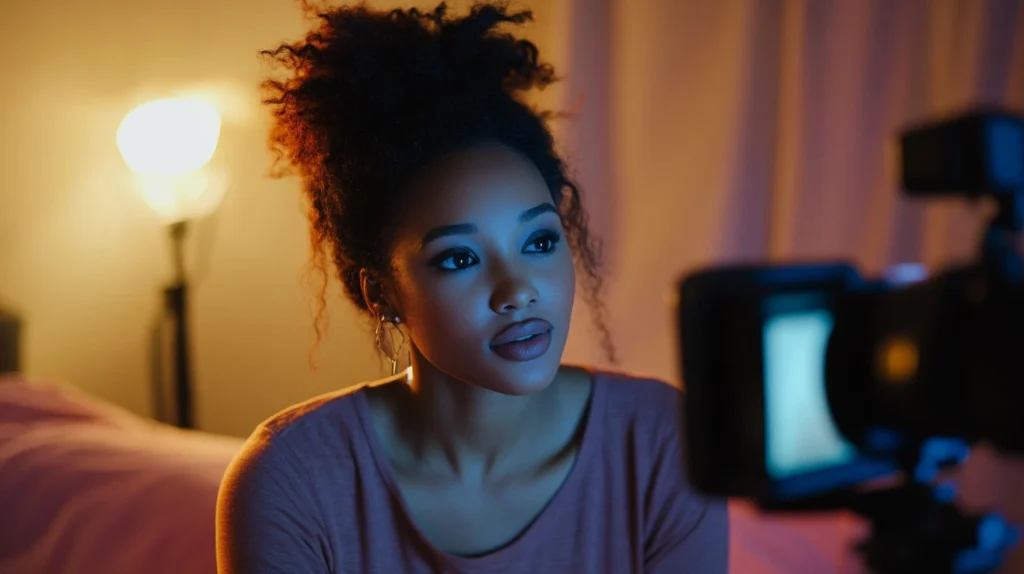
The Best Black Lesbian Sites and Safe Spaces Online
In a world where traditional spaces often overlook or exclude them, Black lesbian individuals have found a digital home online. From blogs to forums, these platforms provide safety, connection, and validation.
One of the most supportive spaces today is Autostraddle’s “Speakeasy”—a dedicated private group where queer women of color can share experiences without judgment. Another standout is For Harriet, which offers bold writing by and for Black women, including pieces on queerness, relationships, and visibility.
Some community-driven sites are even built by Black lesbians themselves, including personal blogs that discuss everything from mental health to dating. These sites don’t just offer articles—they offer belonging.
So, what is the best Black lesbian site? That depends on your needs—but many find empowerment through online collectives that celebrate both race and identity unapologetically.
How Social Media Empowers Black Queer Women
Social media has shifted the way Black lesbians find community and claim space. Platforms like Instagram, TikTok, and Twitter give everyday users a voice. Hashtags like #BlackLesbianMagic and #QueerBlackGirls bring visibility to a population often erased in broader queer or Black narratives.
These platforms are where humor meets activism, where love stories unfold, and where hard conversations happen. Black lesbians use reels and stories not just for fun but to educate, resist, and express pride.
Creators like @ebonyqtalks and @blkdykchronicles (fictional example handles) post affirming, funny, and raw content about the everyday reality of being Black and lesbian. These accounts often reach thousands, proving that real representation starts from within the community.
Redefining Connection: Forums, Podcasts, and Blogs
While mainstream platforms play a role, niche spaces built specifically for Black queer women offer deeper support and understanding.
Here are some ways these digital spaces are building powerful Black lesbian networks:
| Platform Type | Example | Purpose |
|---|---|---|
| Podcast | Inner Hoe Uprising | Explores sex, identity, and love from a queer Black femme perspective |
| Blog | Black Girl Dangerous (BGD) | Offers radical writing by queer and trans people of color |
| Forum | Reddit’s r/BlackLesbians | A safe space for advice, friendship, and venting |
These platforms tackle everything from microaggressions at work to coming out to family, giving Black lesbians a space where they’re not the “other”—they’re the center.
Looking for inspiration? Try lesbian stories inspire empowering narratives to see how digital storytelling is reshaping visibility.
Love, Relationships, and Intimacy
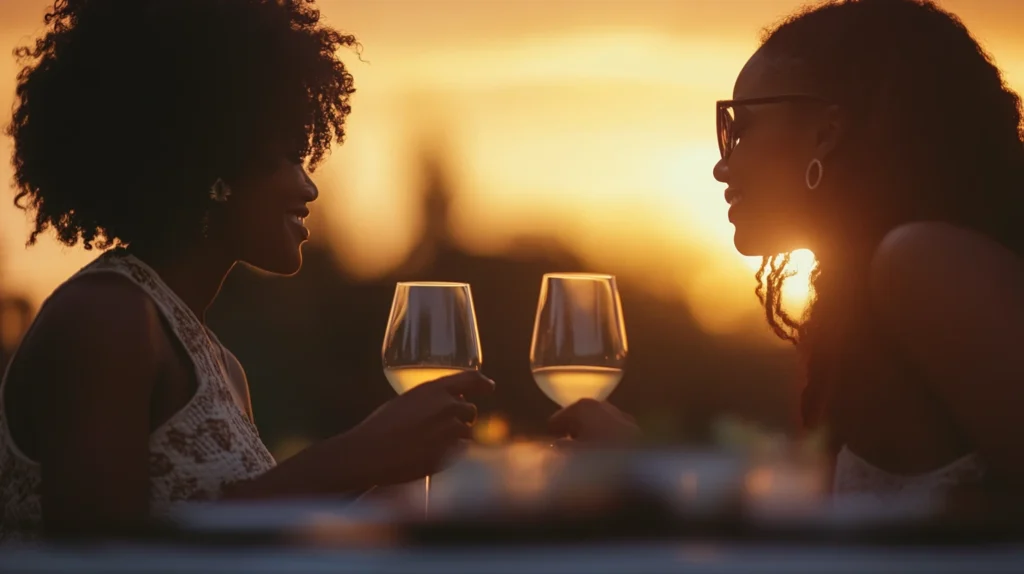
The Dynamics of Black Lesbian Relationships
Black lesbian relationships are layered, resilient, and deeply rooted in mutual understanding and shared cultural identity. But they also navigate unique social challenges—including limited visibility, public misunderstanding, and double marginalization.
These relationships often develop under the pressure of societal expectations and generational norms that discourage same-sex love—especially in Black communities. But for many couples, that challenge fosters a bond rooted in trust, cultural alignment, and lived experience.
Emotional labor, communication styles, and role expectations (like butch/femme dynamics) are deeply personal and vary widely. What makes Black lesbian love powerful isn’t how it looks from the outside—but how deeply it’s felt and protected from within.
Romantic Representation vs Reality
Too often, Black lesbian love is reduced to a stereotype—or erased altogether. Media representation still lags, with few authentic portrayals of Black lesbian couples navigating real-world love.
Even when representation appears—like in The L Word: Generation Q or Twenties—it’s rare to see full, layered relationships that reflect both racial and queer identities. The real stories, however, are vibrant: long-term love, blended families, spiritual connection, chosen family bonds, and evolving gender expressions within relationships.
Many Black lesbians are rewriting what love means on their own terms—free of mainstream assumptions. They’re embracing softness, vulnerability, and emotional growth as strengths, not weaknesses.
Empowering Black Lesbian Couples Through Visibility
Representation is about more than media—it’s about everyday life. Visibility of Black lesbian couples in real life and online helps normalize their existence and affirm their love.
Whether it’s sharing engagement photos on Instagram or starting a podcast on dating and intimacy, Black lesbian couples are showing the world that their love isn’t niche—it’s normal, strong, and worthy of celebration.
Check out this emotional piece on Black lesbian couples love stories for real-life glimpses into passion, partnership, and healing.
Community support also plays a role. Black LGBTQ+ support groups, affirming therapists, and even culturally competent relationship coaches can help couples navigate the social and internal complexities of their love.
❤️ Why This Matters
Love isn’t just about emotion—it’s about safety, expression, and identity. When Black lesbians are free to love out loud, it challenges every narrative that’s tried to silence them. It opens doors for younger generations to dream bigger, love harder, and expect more.
Challenges Faced by the Black Lesbian Community
Racism and Homophobia Within and Outside LGBTQ+ Spaces
For many, coming out is hard. But for a Black lesbian, coming out can mean facing racism, homophobia, and even rejection from both sides of their identity. Many LGBTQ+ spaces—though inclusive in theory—are still predominantly white and fail to understand or represent Black experiences.
Meanwhile, in some Black communities, traditional religious values and conservative family structures can create environments where same-sex relationships are misunderstood, stigmatized, or silenced.
This leaves Black lesbians in a unique position—pushed to the edges of both communities. It’s not just about being visible; it’s about surviving in spaces that weren’t designed for their full identities to coexist.
Mental Health Stigma and Access to Affirming Care
Mental health is a growing concern in the LGBTQ+ world, and Black lesbians are at even greater risk. Anxiety, depression, and trauma are common, especially among those who’ve experienced rejection, harassment, or violence.
But accessing care isn’t simple. Many therapists aren’t culturally competent, and some healthcare systems fail to treat Black queer women with respect or understanding.
Affirming care means providers who understand the lived experiences of Black lesbians, who recognize how systemic oppression impacts identity, and who offer support free from bias.
Podcasts, peer support groups, and Black-led wellness retreats are rising in response—but the need is still great.
Combating Invisibility in Mainstream Narratives
Representation of Black lesbian women in pop culture, healthcare campaigns, politics, or education is minimal. Too often, when LGBTQ+ issues are addressed, Black voices are missing—or Black lesbians are lumped into broader categories that don’t address their specific realities.
This invisibility is not accidental. It’s rooted in a long history of exclusion and erasure. Whether it’s being overlooked for leadership roles in queer activism or being misrepresented in media, Black lesbians are still fighting for space and recognition.
Discover great ideas like lesbian divorce rate 2025 trends causes, which highlight how relationship stress intersects with systemic issues.
Visibility isn’t just about being seen—it’s about being understood and included in real conversations that shape policy, culture, and support systems.
🛑 But Here’s the Truth…
Despite all of this—Black lesbians continue to rise. They create their own spaces, build families that affirm their truth, start businesses, write books, lead protests, and demand respect. Their challenges are real—but so is their power.
Language, Identity, and Labels
What Is Black Lesbian Identity Called?
Language matters—especially when it comes to identity. The term Black lesbian might seem simple, but it holds layers of cultural and social meaning. For many, it’s more than a label—it’s a declaration of pride, survival, and authenticity.
In some spaces, terms like “stud”, “femme”, or “AG” (aggressive) are more commonly used within Black lesbian communities than the broader “butch” or “lipstick” labels. These terms, born in Black and Afro-Caribbean spaces, reflect a more nuanced understanding of how masculinity, femininity, and queerness show up in real lives.
So when someone asks, “What is Black lesbian identity called?”—there’s no one answer. The labels are varied and deeply personal, shaped by region, age, family, and cultural influence.
Reclaiming Words: From Slurs to Symbols of Pride
For generations, Black LGBTQ+ people had to contend with slurs, stereotypes, and silencing. But today, many Black lesbians are reclaiming language and reshaping it into power.
Words like “dyke” or “stud”—once hurled as insults—are being proudly used by the very women they were meant to hurt. The reclamation process allows Black lesbians to choose what defines them rather than accept what society assigns.
This linguistic resistance is powerful. It tells a story of healing and pride. It says, “We get to decide who we are.”
Cultural Differences in Lesbian Labels Across Black Communities
Black communities are not a monolith—and neither are the ways they use language around lesbian identity. In some urban areas, you might hear “stem” (stud + femme) or “no label.” In Caribbean and African American circles, identity language also intersects with spiritual and ancestral influences.
Labels help some people feel secure, while others reject them altogether. There is freedom in that choice.
Here’s a quick comparison of commonly used terms:
| Term | Meaning | Cultural Relevance |
|---|---|---|
| Stud | Masculine-presenting lesbian | Mostly U.S. Black communities |
| AG (Aggressive) | Similar to stud, often used in NYC | Originated in urban Black spaces |
| Femme | Feminine-presenting lesbian | Used across queer spaces |
| No Label | Rejecting categories altogether | Especially among younger generations |
Don’t miss our insight on butch lesbian meaning to understand how language and gender expression intersect in identity.
Literature, Stories, and Narratives
The Power of Black Lesbian Storytelling
For many Black lesbians, storytelling is survival. It’s a tool for preserving identity, reclaiming history, and asserting presence in a world that often renders them invisible. From novels to poetry, memoirs to spoken word, Black lesbians have long used their voices to challenge norms and build legacies.
Whether it’s political essays by Audre Lorde or fictional love letters in Cheryl Clarke’s poetry, Black lesbian narratives are powerful not only for what they say—but for who they reach. They offer visibility to those coming out, healing for those who’ve been hurt, and connection for those who’ve felt alone.
Books and Novels Written by and for Black Lesbians
There’s a growing library of literature written from the unique perspective of Black lesbian women. These stories explore love, identity, loss, faith, joy, and the deeply personal intersections of race and queerness.
Some must-reads include:
| Title | Author | Theme |
|---|---|---|
| Zami: A New Spelling of My Name | Audre Lorde | Autobiography, lesbian identity, intersectionality |
| Loving Her | Ann Allen Shockley | One of the first Black lesbian romance novels |
| Does Your Mama Know? | Lisa C. Moore (editor) | Anthology of coming-out stories from Black lesbians |
| The Gilda Stories | Jewelle Gomez | Black lesbian vampire novel rooted in community and resistance |
These works are groundbreaking not only in subject but in the way they center Black lesbian experiences—often absent from mainstream LGBTQ+ literature.
Oral History and Preserving Queer Black Narratives
Before publishing houses took notice, before social media made voices viral, Black lesbians preserved their histories through oral storytelling. In kitchens, poetry readings, college dorms, and living rooms, truth was passed from voice to voice, generation to generation.
That tradition still thrives—now enhanced by digital tools. Podcasts like Black Queer & Here or YouTube channels run by Black lesbian creators offer living archives of identity. These platforms share stories of coming out, navigating family, building careers, and loving fearlessly.
Looking for inspiration? Try lesbian stories inspire empowering narratives, showcasing the raw beauty of lived experiences.
The Road Ahead: Hope, Progress, and Allyship
What Progress Looks Like in 2025 and Beyond
Today, more Black lesbian voices are leading movements, writing books, producing films, and running businesses than ever before. Representation is rising—not just in pop culture but also in politics, healthcare, education, and activism.
We’re seeing younger generations come out earlier and more confidently. Queer Black influencers are building large communities. More LGBTQ+ organizations are beginning to center racial equity, and mental health spaces are expanding to include culturally affirming care.
But progress isn’t just about visibility—it’s about resources, access, and inclusion. For many Black lesbians, the future must also include legal protections, affordable healthcare, safer communities, and investment in Black queer-led initiatives.
Community Support, Allyship, and Advocacy
Change doesn’t happen in isolation. Black lesbians have built powerful communities—but allies play a role too. Whether you’re inside or outside the LGBTQ+ world, your support matters.
Here are 4 actionable ways to show up:
| Action | Why It Matters |
|---|---|
| Listen to Black lesbian voices | Avoid assuming—amplify lived experience. |
| Support Black queer-owned businesses | Economic empowerment fuels visibility. |
| Challenge racism and homophobia when you see it | Don’t be silent—silence is complicity. |
| Donate to grassroots orgs | Local groups often have the biggest impact and the fewest resources. |
Allies should understand that real advocacy means decentering themselves and making space for Black lesbian leadership, art, and truth.
Why Celebrating Black Lesbian Identity Matters Now More Than Ever
The fight for inclusion isn’t over—but neither is the joy. Celebrating Black lesbian identity means more than just recognizing oppression—it’s about honoring love, culture, style, creativity, faith, family, and freedom.
Visibility affirms existence. Storytelling breaks silence. And joy is a form of resistance.
As we move into the future, we must ensure Black lesbians are not just invited to the table—but that they help set the agenda.
Don’t miss our insights into relationship dynamics and stress factors in lesbian divorce rate 2025 trends causes, a powerful extension of community care and awareness.
Conclusion
The story of the Black lesbian community is one of resilience, creativity, and evolution. From the early whispers of hidden love to today’s bold declarations of identity, Black lesbians have transformed what it means to be visible and powerful in a society that often tries to erase them.
They’ve written their history, shaped their language, redefined love, and stood at the frontlines of progress. Their voices matter—now more than ever.
If we truly believe in equality, it means centering those who’ve been pushed aside. And that means celebrating, uplifting, and standing with Black lesbians—not just during Pride Month, but every single day.
Looking for more real stories and emotional depth? Don’t miss our lesbian stories inspire empowering narratives that honor the powerful voices shaping the queer Black future.
FAQs
Who is the famous Black butch lesbian?
One of the most iconic Black butch lesbians in history is Stormé DeLarverie, often credited with helping spark the Stonewall Uprising in 1969. A performer and LGBTQ+ activist, she was known for her masculine presentation and fierce resistance to police harassment. Her legacy continues to inspire generations of Black lesbians embracing their full identities.
What is the best Black lesbian site?
There are several great platforms, but many consider For Harriet, Autostraddle (especially their POC community features), and independent blogs like Black Girl Dangerous to be among the most empowering. These sites offer community, articles, support, and representation specifically curated for Black lesbian voices.
What is Black lesbian identity called?
There isn’t a single label. Some use the umbrella term “Black lesbian,” while others identify as stud, femme, AG (aggressive), stem, or simply “no label.” These terms reflect unique cultural and personal nuances within the Black queer community.
Who is the most famous lesbian actress?
Globally recognized lesbian actresses include Elliot Page and Sara Ramirez, but when it comes to Black lesbian actresses, Lena Waithe stands out. She is an Emmy-winning writer, actress, and activist who openly identifies as a Black lesbian and uses her platform to tell authentic stories about queer Black life.
What’s the difference between butch and femme?
In lesbian culture, butch generally refers to a more masculine-presenting identity, while femme is more feminine-presenting. These terms also exist in Black lesbian communities, often with added cultural layers. But identities aren’t rigid—many people move between or beyond these labels.
How do Black lesbians experience dating in the LGBTQ+ community?
Black lesbians often face unique challenges while dating, including limited representation in dating apps, racial fetishization, or cultural stigma. However, many also build strong, affirming relationships through community events, mutual friends, or curated online spaces that prioritize safety and identity alignment.
